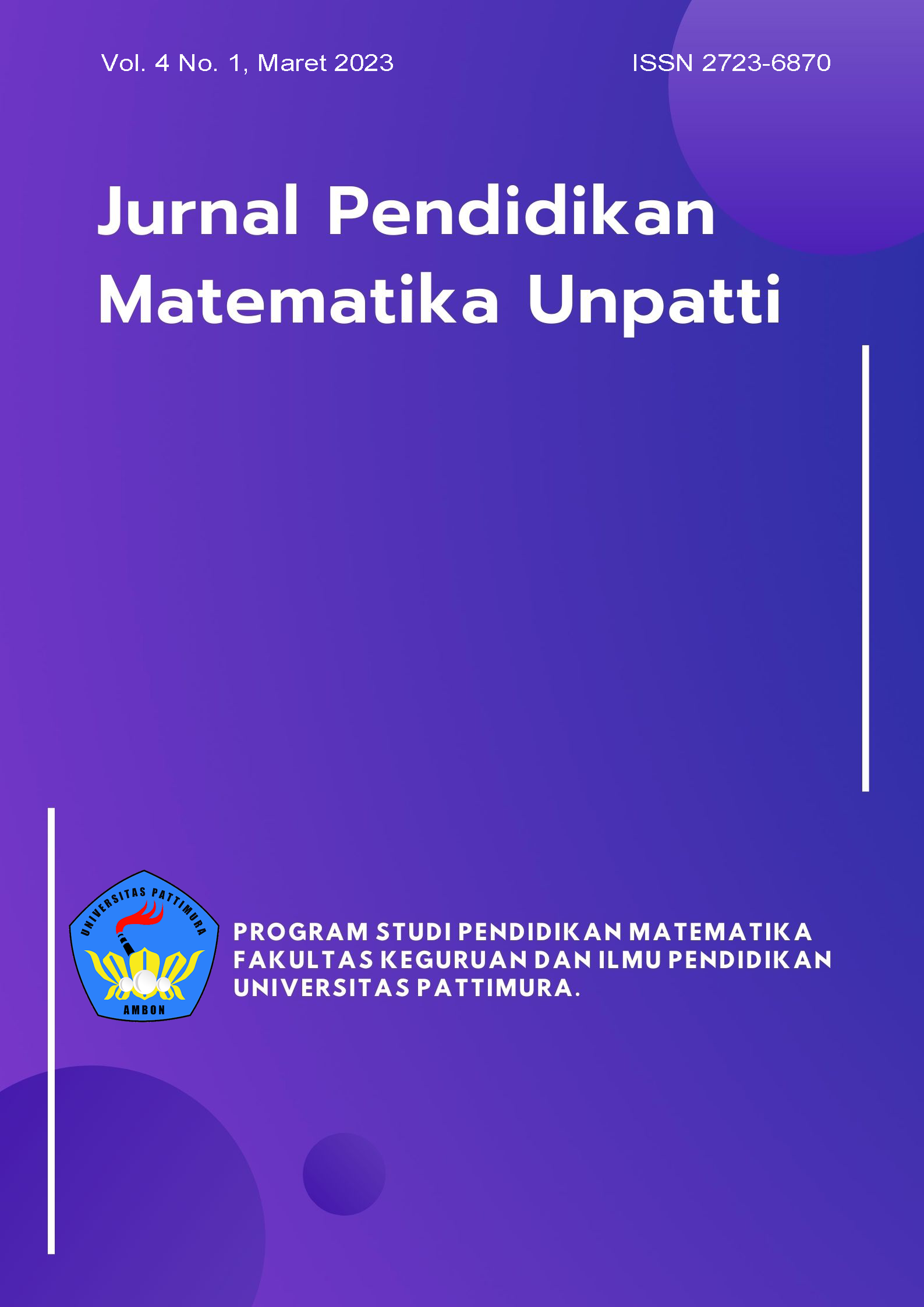PENGGUNAAN VIDEO PEMBELAJARAN DENGAN BANTUAN GEOGEBRA DAN PEN TABLET PADA MATA KULIAH GEOMETRI ANALITIK RUANG
Abstract
Learning Videos are one of the effective learning media in supporting the teaching and learning process during the COVID-19 Pandemic. With the help of the geogebra application and pen tablet tools made in the form of learning videos, it is very helpful for students to understand abstract concepts to be visually clear. (This research is a study with a pretestt-postestt non equivalent control group design. The experimental class was treated with a learning video made with the help of the geogebra application and pen tablet while the control class learned using powerpoint. The results obtained by the value of Sign. (2-tailed) testing of the N-Gain score is 0.00 less than a so that H0 is rejected, meaning that the improvement in the learning outcomes of experimental class students is better than control class students, meaning that there is a difference in the improvement of student learning outcomes on spherical material in the analytical geometry course of significant space
Downloads
References
Ario, M., Isharyadi, R., Pasir Pengaraian, U., Tuanku Tambusai, J., & Hulu, R. (2020). Pengembangan Video Pembelajaran Kalkulus Diferensial Berbasis Pen Tablet. Jurnal Cendekia: Jurnal Pendidikan Matematika, 04(02), 1129–1142.
Calandra, B., & Rich, P. (2014). Digital video for teacher education: Research and practice.
Deswita, H., & Ario, M. (2022). Analisis Kebutuhan Video Pembelajaran Geometri Ruang di Masa Pandemi Covid-19 untuk Pembelajaran Jarak Jauh. Jurnal Riset Teknologi Dan Inovasi Pendidikan, 5(1), 39–46. https://journal-litbang-rekarta.co.id/index.php/jartika
Galligan, L., Loch, B., McDonal, C., & Taylor, J. (2010). The use of tablet and related technologies in mathematics teaching. http://www.techsmith.com
Hake, R. R. (1998). Interactive-engagement versus traditional methods: A six-thousand-student survey of mechanics test data for introductory physics courses. American Journal of Physics, 66(1), 64–74. https://doi.org/10.1119/1.18809
Karal, H., Kokoc, M., Colak, C., & Yalcin, Y. (2020). A Case Study on Online Mathematics Teaching with Pen-based Technology: Experiences of Two Instructors. Contemporary Educational Technology, 6(4). https://doi.org/10.30935/cedtech/6157
Koswara, U., & Rosita, N. R. (2020). Penerapan Video Pembelajaran Mandiri Berbantuan Software Camstudio dan Pen Tablet Pada Perkuliahan Aljabar Linier. Symmetry, 5(1), 106.
Nurdin, E., Ma’aruf, A., Amir, Z., Risnawati, R., Noviarni, N., & Azmi, M. P. (2019). Pemanfaatan video pembelajaran berbasis Geogebra untuk meningkatkan kemampuan pemahaman konsep matematis siswa SMK. Jurnal Riset Pendidikan Matematika, 6(1), 87–98. https://doi.org/10.21831/jrpm.v6i1.18421
Nuritha, C., & Tsurayya, A. (2021). Pengembangan Video Pembelajaran Berbantuan Geogebra untuk Meningkatkan Kemandirian Belajar Siswa. Jurnal Cendekia: Jurnal Pendidikan Matematika, 05(01), 48–64.
Rajiman, W., & Samsinar. (2022). Efektivitas Penggunaan Pen Tablet Berbasis Zoom terhadap Minat Belajar Matematika Ekonomi di Masa Pandemi Covid-19 Mahasiswa Jurusan Ekonomi Pembangunan. In JPMR (Vol. 07, Issue 01). https://ejournal.unib.ac.id/index.php/jpmr
Sri Hariati, P. N., Lily, R., & Islamiani, S. (2020). Pengaruh Penggunaan Media Video Animasi Terhadap Respon Siswa dalam Pembelajaran Matematika pada Materi Operasi Bilangan Bulat. Jurnal Pembelajaran Dan Matematika Sigma (JPMS), 6(1), 18–22.
Suci Wulandari, Widdya Rahmalina, Sri Novia Martin, & Lisa Yuniarti. (2021). Respon Terhadap Penggunaan Stylus Pen dan Fitur Record dalam Pembelajaran Matematika Online. GAUSS: Jurnal Pendidikan Matematika, 4(2), 62–76. https://doi.org/10.30656/gauss.v4i2.3164
Sumarni, & Prayitno, A. T. (2016). Kemampuan Visual-Spatial Thinking dalam Geometri Ruang Mahasiswa Universitas Kuningan. JES-MAT, 2(2), 81–100.
Yusepa, B. (2016). Kemampuan Abstraksi Matematis Siswa Sekolah Menengah Pertama (SMP) kls VIII. Symmetry: Pasundan Journal of Research in Mathematics Learning and Education, 1.
Copyright (c) 2023 Widya Putri Ramadhani, R H Yanti Silitonga

This work is licensed under a Creative Commons Attribution 4.0 International License.
Jurnal Pendidikan Matematika Unpatti is an Open Access Journal. The authors who publish the manuscript in Jurnal Pendidikan Matematika Unpatti agree to the following terms:
Jurnal Pendidikan Matematika Unpatti is licensed under a Creative Commons Attribution 4.0 International . This permits anyone to copy, redistribute, remix, transmit and adapt the work provided the original work and source is appropriately cited.
This means:
(1) Under the CC-BY license, authors retain ownership of the copyright for their article, but authors grant others permission to use the content of publications in Jurnal Pendidikan Matematika Unpatti in whole or in part provided that the original work is properly cited. Users (redistributors) of Jurnal Pendidikan Matematika Unpatti are required to cite the original source, including the author's names, Jurnal Pendidikan Matematika Unpatti as the initial source of publication, year of publication, volume number, issue, and Digital Object Identifier (DOI); (2) Authors grant Jurnal Pendidikan Matematika Unpatti the right of first publication. Although authors remain the copyright owner.





